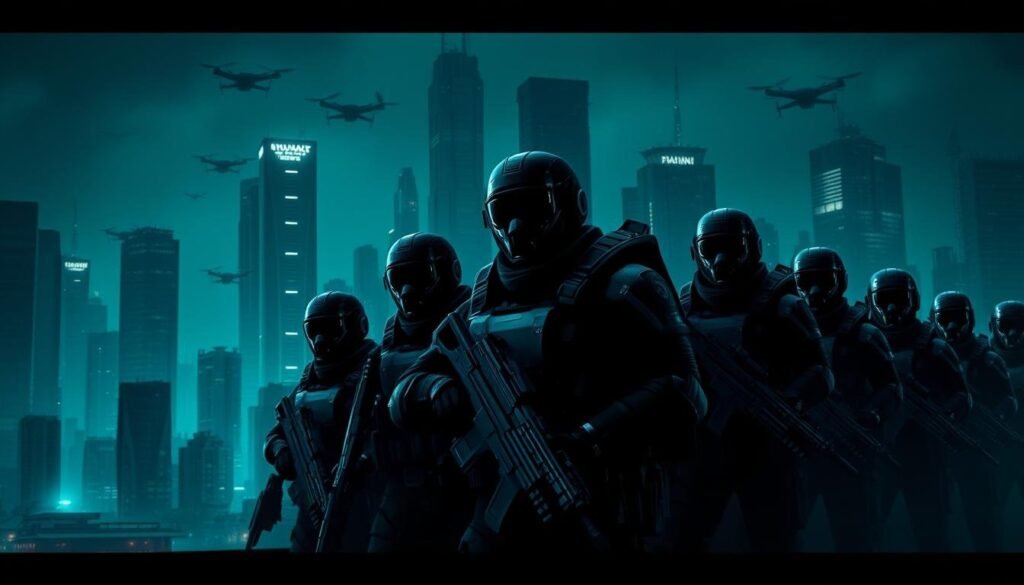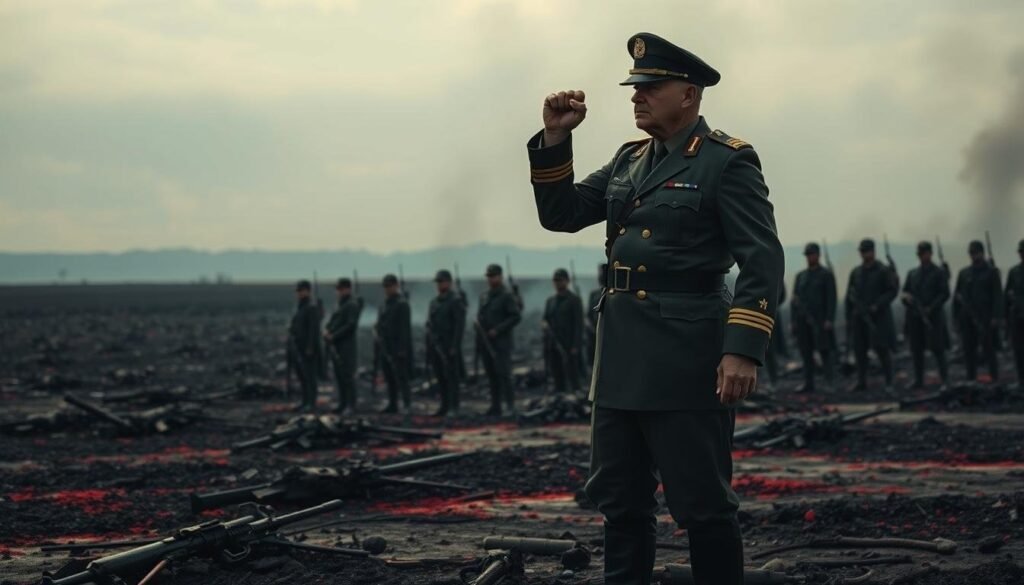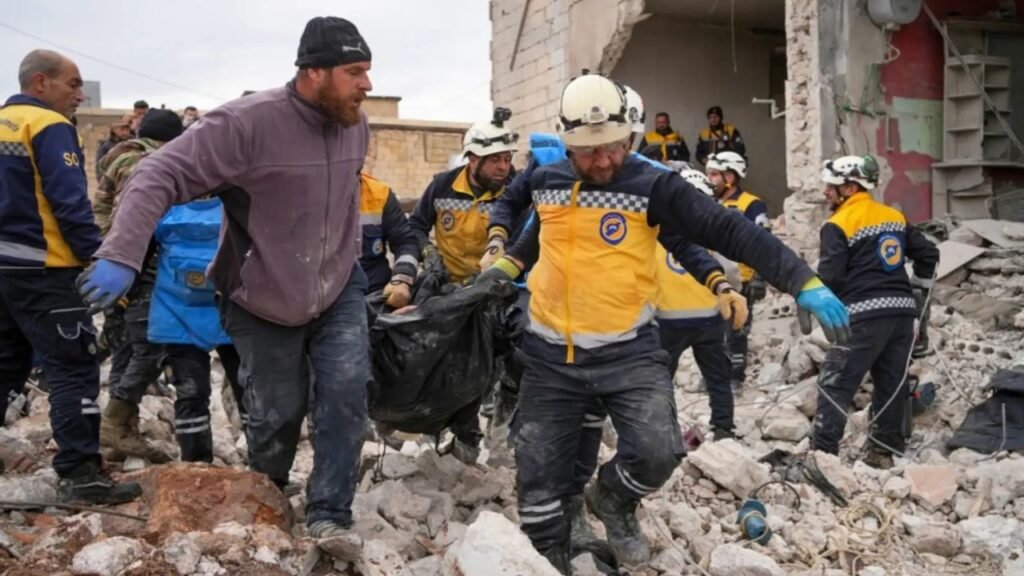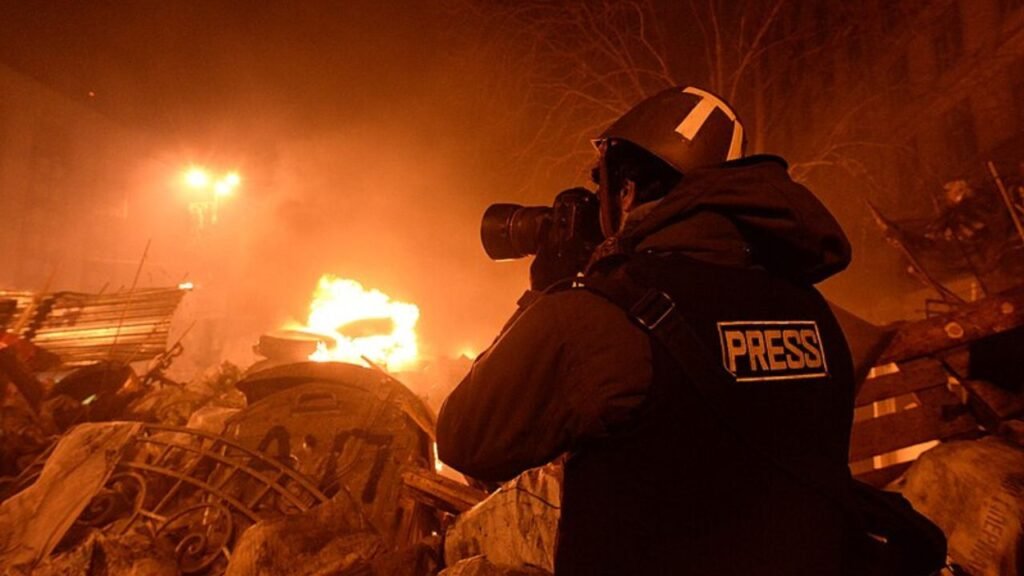Is Declaring No Quarter a War Crime? Have you seen the term “no quarter” before? It pops up in history and military talks. But what does it mean, and is it against international law? “No quarter” means fighters can’t surrender.
This idea has sparked debate, making people wonder if it’s legal in today’s wars. As you dive deeper, you’ll learn about its past, legal side, and today’s views.
Figuring out if “no quarter” is a war crime means looking at international law and its ethics.
Contents
- 1 The Meaning and Historical Context of “No Quarter”
- 2 International Laws Governing Warfare
- 3 Is Declaring No Quarter a War Crime? Legal Analysis
- 4 Notable Historical Examples of “No Quarter” Orders
- 5 Prosecution of “No Quarter” War Crimes
- 6 Modern Interpretations and Implications
- 7 Conclusion on Declaring No Quarter as a War Crime
- 8 FAQ
- 8.1 What is the historical context of declaring “no quarter” in warfare?
- 8.2 How do international laws govern the concept of “no quarter”?
- 8.3 Is declaring “no quarter” considered a war crime under international law?
- 8.4 What are the challenges in prosecuting “no quarter” as a war crime?
- 8.5 How do modern interpretations of “no quarter” affect its application in contemporary warfare?
- 8.6 What are the implications of declaring “no quarter” for modern military practices?
The Meaning and Historical Context of “No Quarter”
When you hear “no quarter,” you might think of its literal meaning. But its historical context is more complex. The term “no quarter” means a conquering force will not show mercy or grant quarter to its enemies. This means no one will be spared from being killed or captured.
Historical Origins of “No Quarter”
The idea of “no quarter” started in medieval warfare. Back then, it was common to grant quarter, where prisoners were taken and either ransomed or kept as prisoners of war. But when a commander declared “no quarter,” it meant the defeated enemy would not be spared.
Declaring “no quarter” was used in many conflicts to scare or demoralize the enemy. It was a way to show that resistance would face extreme force. This could lead to a quicker surrender.
- The term has been used in numerous historical battles, often with significant consequences.
- It reflects a harsh approach to warfare, where showing mercy was seen as a sign of weakness.
- The practice has evolved over time, influenced by changing attitudes towards warfare and the treatment of prisoners.
Understanding the historical context of “no quarter” helps us see its legal implications in modern warfare. As we delve deeper, the legal analysis of declaring “no quarter” as a potential war crime will show its modern-day importance.
International Laws Governing Warfare
International laws are key in controlling warfare. The Geneva Conventions are especially important. They aim to protect non-combatants and limit how wars are fought.
Prohibitions on Certain Conduct in Warfare
The Geneva Conventions list what’s not allowed in war. For example, they ban reprisals against protected persons and objects, like hospitals. They also stop the use of weapons that hurt too much or harm civilians by mistake.
These laws are not just ideas; they shape how wars are fought. For instance, the rule of distinction means fighting only against real military targets, not civilians.
Almost every country has signed up to the Geneva Conventions. This shows a big commitment to following humanitarian law in war.
It’s important to know these laws to figure out if saying “no quarter” is a crime. As you learn more, think about how these laws affect actions in war.
Is Declaring No Quarter a War Crime? Legal Analysis
Have you ever thought about if saying “no quarter” in war is a crime? Saying “no quarter” means fighters won’t be taken alive and will be killed. This action is a big worry under international law.
To figure out if saying “no quarter” is a crime, we need to look at what a war crime is. A war crime is a serious break of war laws, leading to personal guilt. The Geneva Conventions and their extra rules are key in explaining these laws.
Saying “no quarter” goes against what these treaties say. It breaks rules like not killing enemies who can’t fight anymore. It also messes with the rule of knowing who is fighting and who isn’t.
Application to “No Quarter” Orders
Looking at “no quarter” orders through a legal lens shows they can be crimes. For example, telling soldiers not to take prisoners can mean killing those who have given up or can’t fight. This is against international law.
Studying “no quarter” orders means looking at their purpose and effects on the battlefield. It’s important to see if these orders break international law, like killing prisoners or the wounded.
In short, saying “no quarter” can indeed be seen as a war crime under international law. It breaks key rules of humanitarian law. Knowing the legal side of such orders is key for military and legal experts.
Notable Historical Examples of “No Quarter” Orders
Throughout history, “no quarter” orders have been a key and often debated part of war. Such orders have been used in many battles, leading to big consequences.
The Alamo during the Texas Revolution is a famous example. In 1836, the Mexican army, led by General Santa Anna, attacked the Alamo. When the defenders were defeated, Santa Anna’s men killed almost all of them. This showed a harsh “no quarter” policy.
| Historical Event | Conflict | Consequences |
|---|---|---|
| Siege of the Alamo | Texas Revolution | Nearly all defenders were killed |
| Crécy | Hundred Years’ War | Significant loss of life among French knights |
| Azincourt | Hundred Years’ War | Heavy casualties among French forces |
Consequences and Reactions to “No Quarter” Orders
The effects of “no quarter” orders have been severe. At Crécy and Azincourt, English forces killed many French knights who couldn’t escape or surrender. They did this to show their strength and to scare the enemy.
These orders have led to a lot of deaths and have sparked debate. It’s important to understand the background of these orders to see their impact under international law.
Reactions to “no quarter” orders have been mixed. Some see them as necessary in war, while others call them cruel. The examples show how complex and serious these orders are.
Prosecution of “No Quarter” War Crimes
Have you ever wondered how “no quarter” orders are handled under international law? Prosecuting these war crimes is a complex task. It requires legal mechanisms and cooperation from around the world.
The International Criminal Court (ICC) and other international tribunals are key in this effort. They aim to hold people accountable for breaking international humanitarian law.
Challenges in Prosecuting “No Quarter” as a War Crime
There are several hurdles in prosecuting “no quarter” as a war crime. These include:
- Gathering evidence in the midst of conflict
- Identifying individuals responsible for giving and carrying out “no quarter” orders
- Ensuring that prosecutions are conducted fairly and in accordance with international law
The complexity of these cases demands a deep understanding of international humanitarian law. It also requires navigating complex legal frameworks.
Key issues in prosecuting “no quarter” war crimes include the need for international cooperation. There are also challenges in investigating crimes committed during conflict.
Modern Interpretations and Implications
Today, “no quarter” is seen in a new light in military actions. This change shows how old ideas are viewed differently in today’s wars.

War tactics and laws have changed, making us rethink “no quarter” orders. Now, it’s key to follow laws that ban such actions. This shows the need for those in charge to be held accountable.
Implications for Modern Warfare
“No quarter” has big effects in today’s wars, especially in urban battles and against different types of enemies. Using this idea can harm many people. It also affects how the world sees us and our actions.
It’s important for military leaders and lawyers to understand “no quarter” today. They must deal with the challenges of modern war while keeping to international laws.
See Also: The Controversial Issue of Fake Surrender as a War Crime
Conclusion on Declaring No Quarter as a War Crime
You’ve learned how “no quarter” has changed over time. It started with old battles and now has new meanings. Saying “no quarter” is seen as a big mistake in international law. This law helps keep wars fair and protects everyone involved.
Legal experts say “no quarter” can be a war crime. This is true if it leads to harm for those fighting or not fighting. Old battles show the harm of such orders. Today, people are held responsible for these actions.
Thinking about “no quarter” today shows its importance. Knowing its history and legal side is key. The fight against “no quarter” as a war crime continues.
FAQ
What is the historical context of declaring “no quarter” in warfare?
“No quarter” in warfare means no prisoners are taken. It’s a practice seen in many battles through history. It means fighters are killed instead of captured.
How do international laws govern the concept of “no quarter”?
International laws, like the Geneva Conventions, ban “no quarter” in war. These laws aim to control how soldiers fight and protect civilians.
Is declaring “no quarter” considered a war crime under international law?
Yes, “no quarter” can be a war crime. It breaks laws that say you can’t kill fighters who have given up or are unable to fight.
What are the challenges in prosecuting “no quarter” as a war crime?
It’s hard to charge “no quarter” as a war crime. It’s tough to find evidence, identify who did it, and deal with complex legal systems.
How do modern interpretations of “no quarter” affect its application in contemporary warfare?
Today’s views on “no quarter” change how it’s seen in war. It’s influenced by new ideas on humanitarian law and how we fight.
What are the implications of declaring “no quarter” for modern military practices?
Saying “no quarter” can harm modern military ways. It might break laws of war and affect soldiers and leaders.




